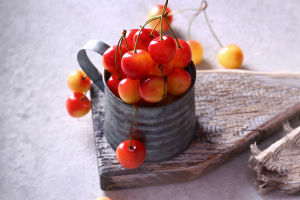Hello, Lykkers! Have you ever wondered how your favorite candies get their eye-catching colors?
From bright reds to vibrant greens, candy colors are as diverse as a rainbow.
But behind the sweetness lies a fascinating science that transforms these sugary treats into tiny, edible works of art. So, let's dive into the world of candy colorings to see what gives them that irresistible visual appeal.
The Basics of Candy Coloring: Natural vs. Artificial
Candy colors are mainly created using two types of dyes: natural and artificial. Natural dyes come from fruits, vegetables, and other plant sources. For example, the deep red hue in some candies can be traced back to beets or pomegranates, while turmeric gives a sunny yellow tint. These natural colors are often favored for being organic and healthier alternatives.
Artificial dyes, on the other hand, are lab-made and are designed to provide a bolder, more intense look that natural dyes can't always achieve. You've probably heard of them—Red #40, Blue #1, and Yellow #5. These synthetic colorings are incredibly versatile and can stand up to the high temperatures and long shelf lives needed for mass production of candies.
How Candy Colors Are Created in the Lab
Artificial candy colors don't just happen by chance. Chemists carefully design them to achieve a precise balance of brightness, stability, and safety. They start by breaking down the pigments into small molecules that blend smoothly into the candy mixture. This ensures that every piece of candy gets a consistent, even color.
For natural dyes, the process is a bit different. Chemists extract pigments from plants, but because these colors tend to fade faster and vary depending on the crop, they require more tweaking. Manufacturers often add stabilizers to keep the colors from breaking down over time. This is why you might see vitamin C or citric acid on the ingredient list—both act as preservatives.
The Role of pH and Heat in Candy Colors
One key factor that affects candy colors is the pH level of the mixture. For example, the same dye can appear red in an acidic environment and blue in a basic one. Manufacturers tweak the pH levels to achieve the desired shade.
Heat also plays a huge role. Candies like hard sweets, and gummies are cooked at high temperatures, which can break down some colorings. Artificial dyes tend to withstand heat better, which is why they are commonly used in candies like lollipops and gummies that go through a hot cooking process.
How Do They Make Candy Shine?
If you've ever noticed how some candies have a beautiful glossy finish, that's another science trick! The secret is in the final coating. A thin layer of wax or glaze (often made from food-grade shellac) is brushed over the candies. This gives them a reflective surface that catches the eye. Think about those shiny jelly beans or polished chocolate candies—without this final step, they'd look dull and far less appealing.
Trends in Candy Coloring: Going Natural?
Recently, there has been a growing trend to use more natural colorings due to consumer demand for healthier ingredients. Brands are experimenting with new plant-based sources like spirulina (a type of algae) for blues and hibiscus for reds. These natural options are slowly replacing artificial dyes, especially in gourmet and organic candy lines.
However, going natural isn't always easy. Natural dyes can be less stable and more expensive, so finding the perfect balance between color quality, safety, and cost remains a challenge.
Fun Fact: Color Psychology and Candy
Did you know that the color of candy can affect how we perceive its flavor? Studies show that people tend to associate red and pink with sweet flavors like cherry or strawberry, while green can signal a tart or sour taste. Even if the flavor is identical, the color can trick your brain into expecting something completely different!
So, next time you pick up a brightly colored candy, remember—it's not just about taste. The colors play a big role in making the experience more enjoyable, engaging, and fun.
Whether it's a vivid lollipop or a soft gummy bear, the science behind candy colors is complex, blending chemistry and creativity. From natural dyes to synthetic marvels, candy colors have a fascinating backstory that adds a whole new layer of appreciation for these treats.


